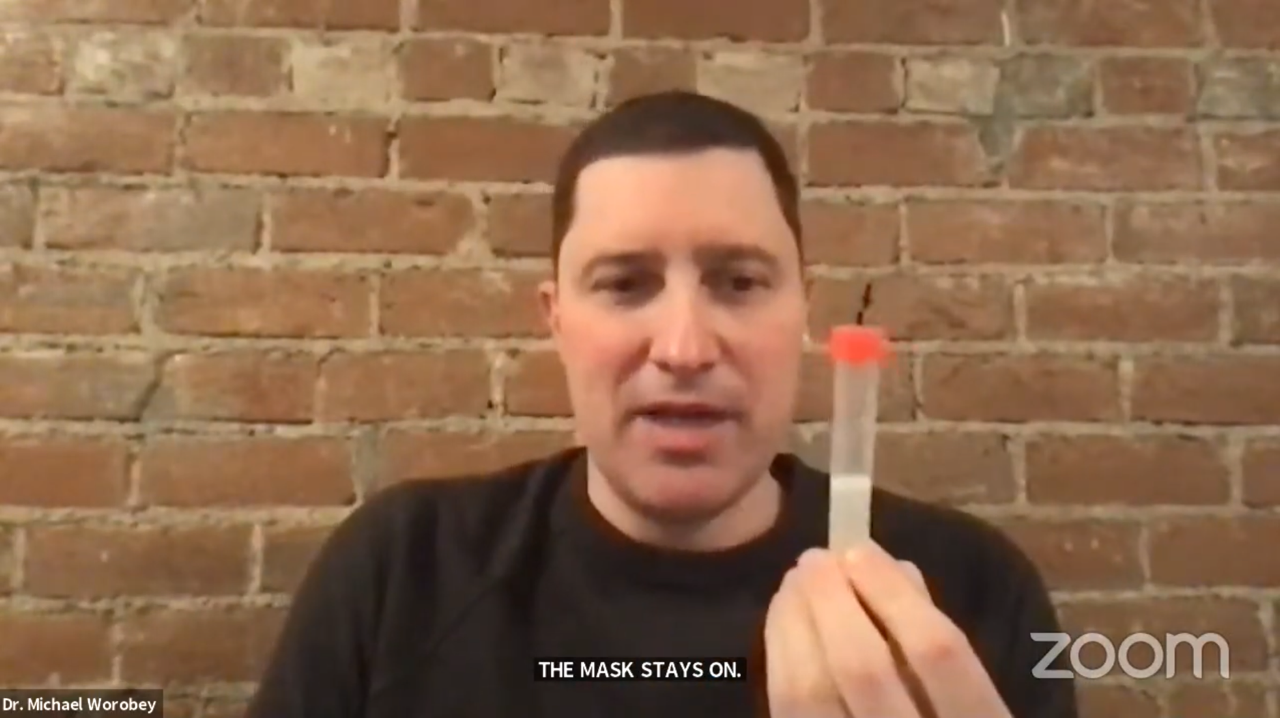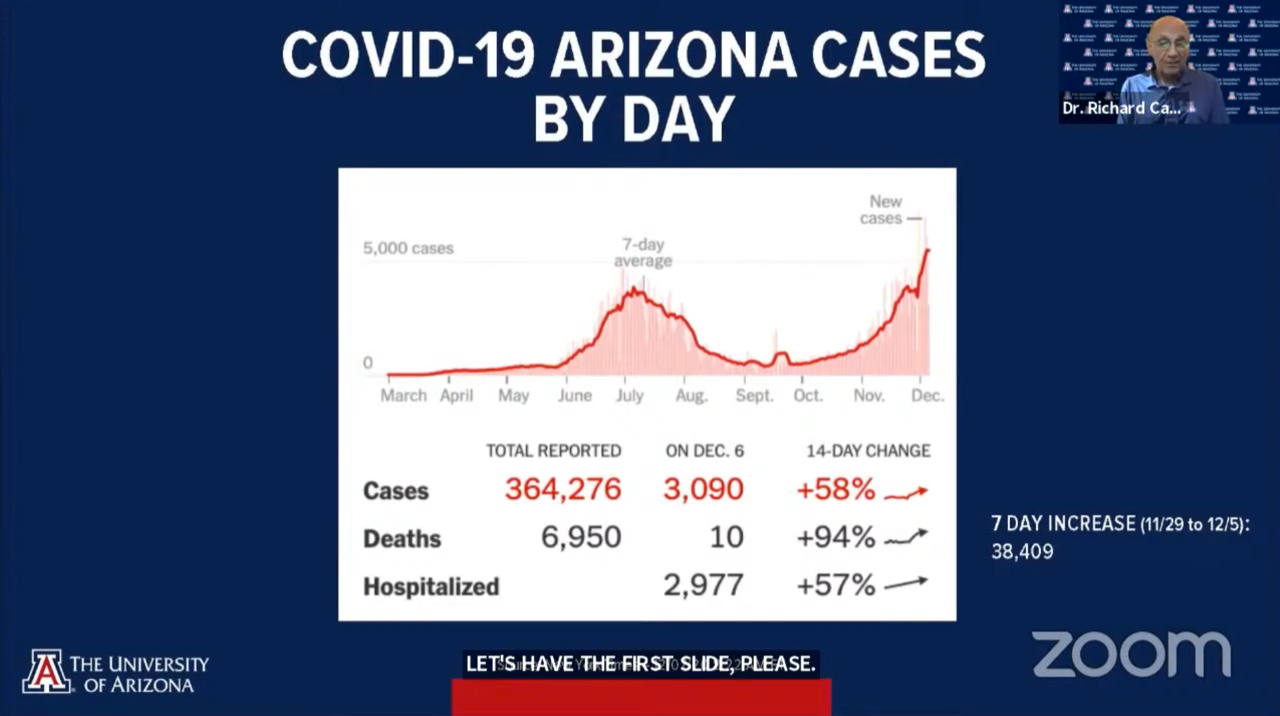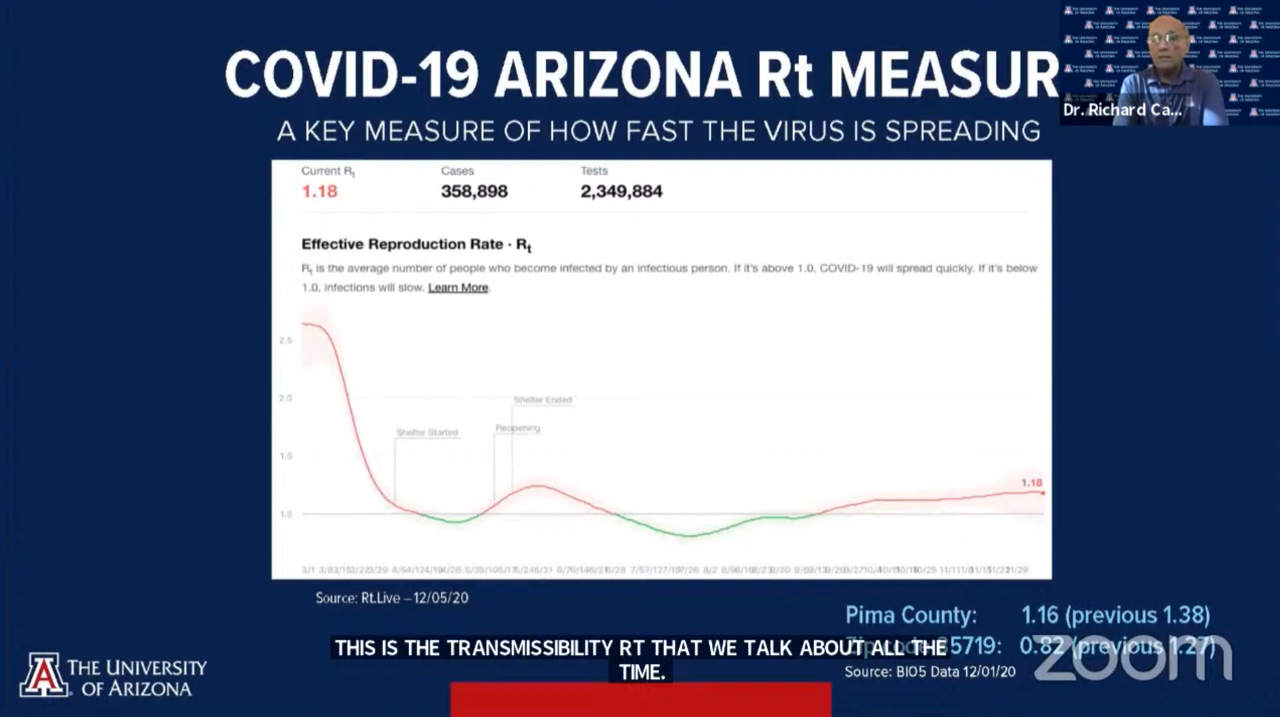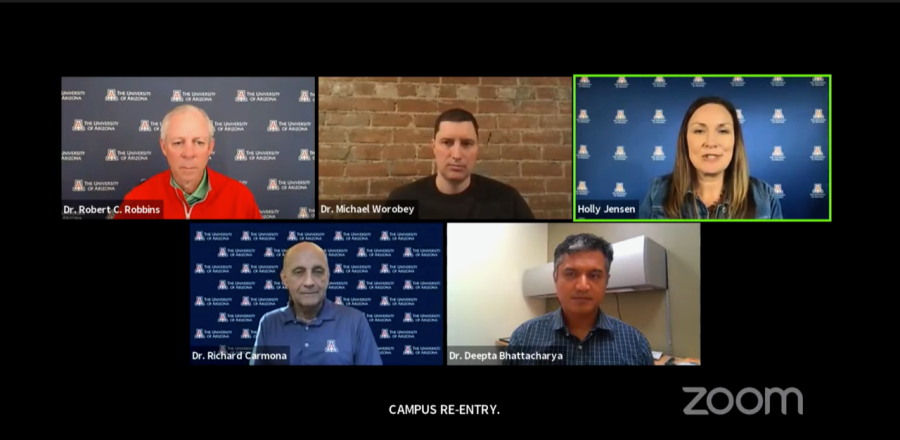The University of Arizona’s COVID-19 reentry task force met Monday morning to discuss details surrounding a new test, the possibility of vaccine distribution and the data on COVID-19 transmission in the university community.
This week, the task force was joined by Michael Worobey, head of the department of ecology and evolutionary biology at UA, to discuss new testing protocols being implemented this spring. Deepta Bhattacharya, associate professor of immunobiology at UA, also joined the conference to explain the science behind COVID-19 vaccines, which could potentially be distributed within the next month or so.
UA President Dr. Robert C. Robbins said the university intends to use an enhanced version of its “Test, Trace, Treat” protocol next semester, which will require mandatory weekly testing for students residing in dorms and students attending in-person classes on the main campus. Students who do not comply with the testing mandate will be blocked from utilizing the university’s Wi-Fi network and possibly other services.
“We think this is an incentive for people to comply with our mandatory testing, and we think its really going to be important,” Robbins said. “We’re changing our approach because we’re going to be able to expand our testing capability. I’m very happy about that. The more testing we do, the better.”
There will be another testing blitz from Jan. 6 to Jan. 12, which will coincide with the move-in period for dorm residents. Like the fall semester, residents must test negative in order to move in.
Holly Jensen, vice president of UA Communications, clarified that the new saline gargle test developed by Worobey will not be used during the testing blitz, but will be used for weekly testing following the blitz.
“I want to make it clear that we are changing our testing protocols for next semester and moving from an antigen test to a PCR test for students,” Jensen said. “But, it is worth noting that we will continue to use the antigen nasal swab testing for our major testing blitzes. When our students come back at the beginning of the spring for the dorm move in, we will be doing the 1-hour-turn-around antigen testing with the nasal swab, but our regularly weekly testing will be our PCR test.”
Robbins expressed enthusiasm over the potential of the new test.
“I’m optimistic with this new test, which moves us closer to the ideal of the ten second ten cent test … we have the tools needed to again mitigate the spread of COVID-19 on our campus and be a responsible member of the southern Arizona community,” Robbins said.
Worobey described for the task force how a PCR test works and also demonstrated how his saline gargle test is simple and less invasive than the nasal swab.
“It’s sort of thought of as the gold standard for how to test for the presence of the virus,” Worobey said of PCR testing. “What it does is it tries to find trace amounts of the genetic material, in this case the virus, and then amplify that up to a large enough level that you can actually detect ‘yes/no’ does this person have the virus or not.”
Worobey claims that his saline gargle test is not only less invasive than the nasal swab, but also much more accurate.
“It actually pulls the virus out of about 30-35% more people than when you test with the nasal swab, so I think this is going to become the new gold standard for how to test for this virus,” Worobey said.
One caveat of the new test is that individuals cannot eat, drink, chew gum, brush their teeth, chew tobacco or do anything similar for an hour before they take the test.

With the potential of COVID-19 vaccines developed by Pfizer and Moderna becoming available for distribution within the next couple of weeks, the task force invited Bhattacharya to describe how vaccines work and dispel some anti-vaccine misinformation.
An important point of emphasis for Bhattacharya was that safety protocols in vaccine development were not compromised in any way.
“I know that there’s been some concern that the process has been rushed, so I want to make clear what parts of the steps were accelerated,” Bhattacharya assured. “The short answer is that it wasn’t safety.”
Bhattacharya explained that the process was able to move quicker than usual because vaccine developers had some of the protocol and infrastructure already in place from a 2003 SARS coronavirus outbreak, for which vaccines were not distributed. Market analysis and other business-related steps in the vaccine development process were also shortened, none of which would compromise safety in the vaccine’s development.
Bhattacharya also cautioned against anecdotal adverse-effect stories about the vaccine.
“One of the really important things that we want to keep in mind here is using the data and the numbers to tell us if there are actually any effects that are coming from the vaccine or not, Bhattacharya said. “Anecdote is really not evidence that a vaccine is actually causing something detrimental.”
Bhattacharya also suggested that it’s quite possible that the vaccine could arrive in Tucson as soon as a week after its authorization hearing on Dec. 10. Healthcare workers would be first in line to receive the vaccine, followed by high-risk individuals.
Task force director Dr. Richard Carmona gave the rundown on the increasingly deadly spike of COVID-19 cases in the state.
In Arizona, deaths from COVID-19 have increased by 94% and hospitalizations have risen by 57%. The number of COVID-19 cases in Arizona exceeds peak levels from the surge over the summer.

While Carmona was glad to see the rate of transmission number for the university’s zip code and the county decrease from last week – now 0.82 and 1.16 respectively, compared to 0.82 and 1.16 the previous week – he still called on Wildcats to keep in mind that they are members of a broader community.

“We are part of a bigger ecosystem that is struggling,” Carmona said, “and our people go in and out of that ecosystem every day. They go home, see their families, they go shopping, they go to the store, they eat. We got to be more careful.”
The Dec. 7 reentry briefing was the last one for 2020. The task force will convene again before the beginning of the spring 2021 semester in January.
Follow Kristijan Barnjak on Twitter









